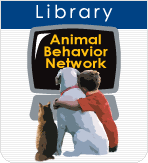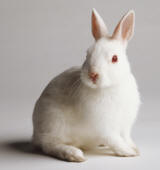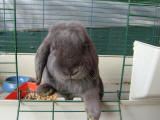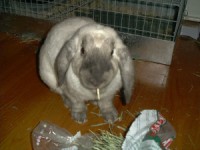|
Need Help?
|
|
Call
1-800-372-3706
to
speak to a Veterinary Behavior Technician |
|
Paws To Speak!
Member
Main Menu
|
 |
|
Help is at your
fingertips by library, email and
phone. |


|
Why kennel train a rabbit?
 Rabbits
can learn to adopt a kennel (also called a crate or carrier) as a safe and comfy resting area. If your rabbit feels safe in the kennel, it will be less traumatic to travel inside the kennel for health and grooming visits or for other car or air travel. Rabbits
can learn to adopt a kennel (also called a crate or carrier) as a safe and comfy resting area. If your rabbit feels safe in the kennel, it will be less traumatic to travel inside the kennel for health and grooming visits or for other car or air travel.
Do NOT make the only time that your rabbit is in the kennel associated with long car rides or trips that result in undesirable destinations such as veterinary treatments, long term boarding or baths.
Kennel training steps
Watch your rabbit and continue to praise relaxed behavior in the kennel. If your rabbit stops eating the food treat, you've gone too far, too fast. Back up and proceed from where your rabbit is comfortable (eating the treat) and again move forward in baby steps.
|